Subsequently, it is not uncommon to need a part custom made. If that's the case, we may be able to help. Please email pictures of the movement to us here at Clockworks.
Mechanical clock hand nuts
One of the most common parts a Mechanical clock needs is the hand nut. As we said before, the older the clock the harder things are to find. So, the hand nuts Clockworks offer are for movements made after the 1930's.
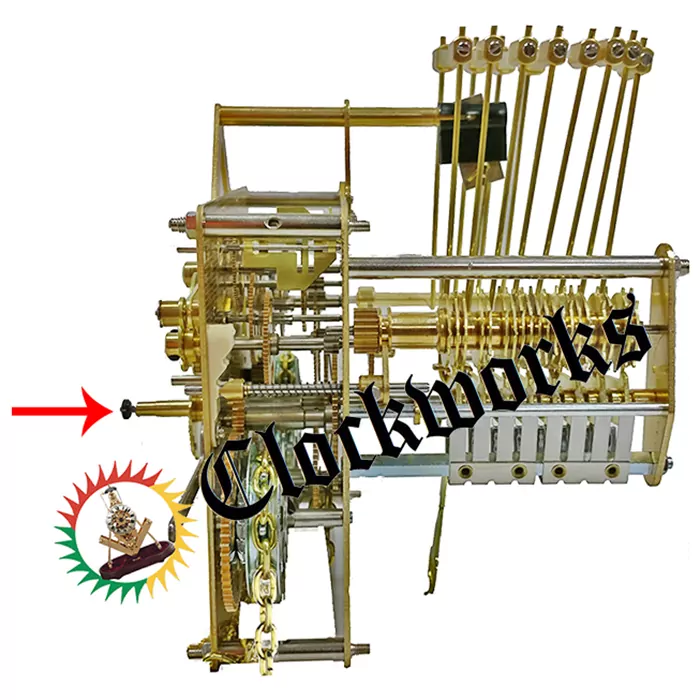
Prior to 1930 clock hand nuts
There were not many standards on what the hand nut size should be on the early clocks. However, prior to around 1930 there is no telling what will work. In other words, it is literally trial and error. There was no standard hand nut size.
Subsequently, any hand nut we offer, may, or may not, work. This includes cuckoo hand nuts, American clock hand nuts, or German hand nuts. However, with even all of these assortments, there is a chance none of them will work on the clock.
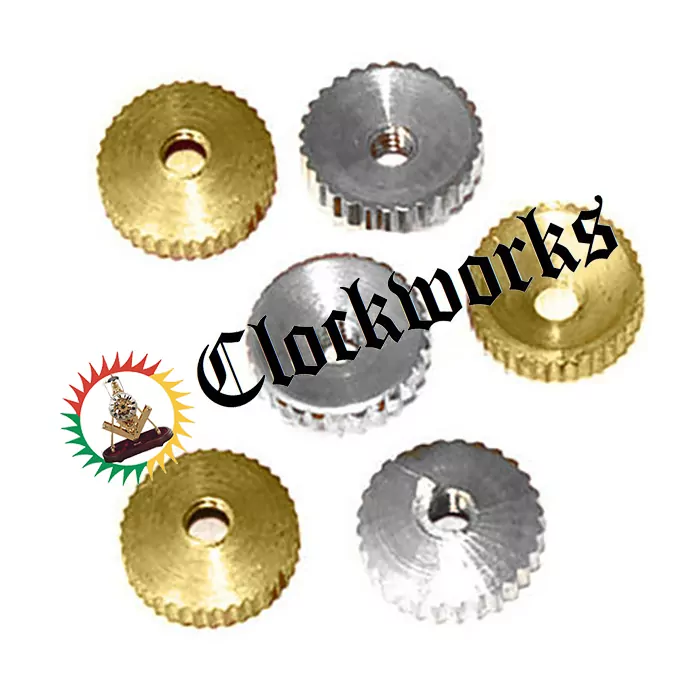
Post 1930 clock hand nuts
Generally speaking, what we have to offer in the three types of clock hand nuts will cover most of the post 1930 Mechanical clocks.
The cuckoo hand nuts fit about 80% of the post war German made cuckoo clocks.
So, the American clock hand nuts fit many of the mechanical time strikes that were so popular. German hand nuts fit most post war German made mechanical clocks, with the exception being a few large grandfather clocks.
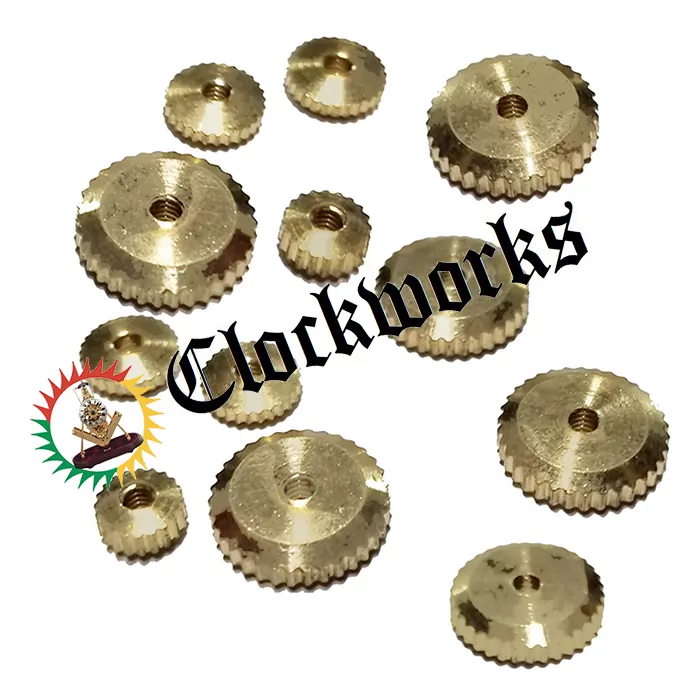
Clocks that do not take a hand nut
However, not all clocks require a hand nut. Some antique mechanical clocks require a clock hand washer and a tapered pin instead. These secure the minute hand as an alternative to the hand nut.
The washer may have a small square hole, or large, oblong or round hole. Clockworks offers an assortment of 100 clock hand washers that includes all the styles above. Use a taper pin to secure the hand with the washer on top of it.
Insert the taper pin into the hole in the end of the minute hand arbor to secure the washer and minute hand to the clock. A taper pin is a small brass or steel rod that is wide on one end and skinny on the other. Clockworks offers them in an assortment of 100 to ensure the right one is there.
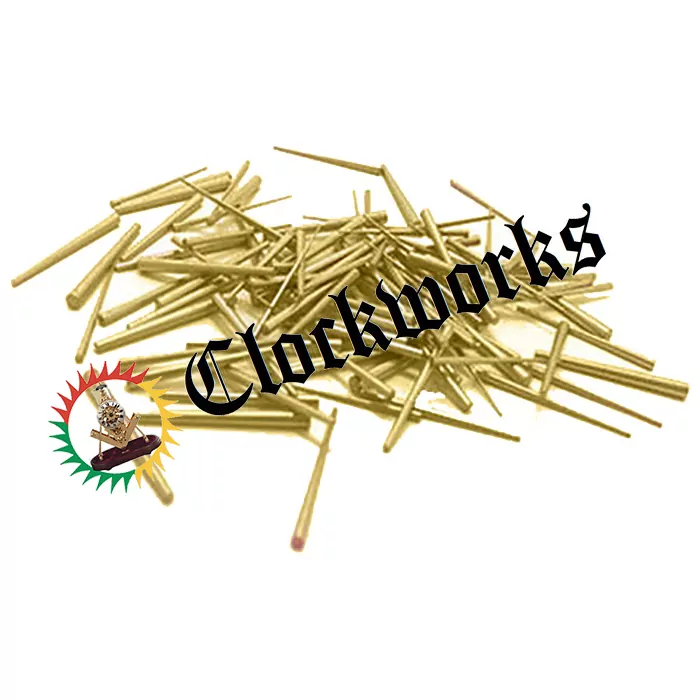
Clicks and click springs
Mechanical clocks with a ratchet wheel use clicks. This can mean a spring driven clock or a weight driven clock.
Clicks keep it wound in only one direction. Both have a ratcheting function as in a wheel being able to turn one way only. It spins one way and makes a clicking sound when this is done. That clicking sound is the click. This is the small part that makes the wheel turn in only one direction.
The click is held in the down position with some pressure from what is known as a click spring.
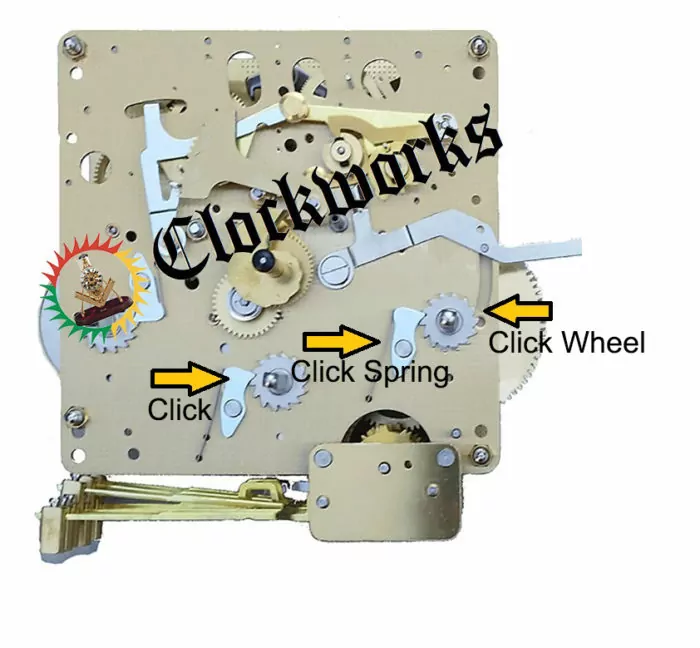
Clicks on spring driven movements
Often when a mainspring breaks the click will loosen considerably from the shock.
Replace or tighten the loose click to ensure it will not let go when winding the clock with the key.
It is not uncommon to think the mainspring broke when really the click eventually came loose and let the mainspring slip. Once the click on the ratchet slips the mainspring lets loose and momentum of it unwinding is unstoppable.
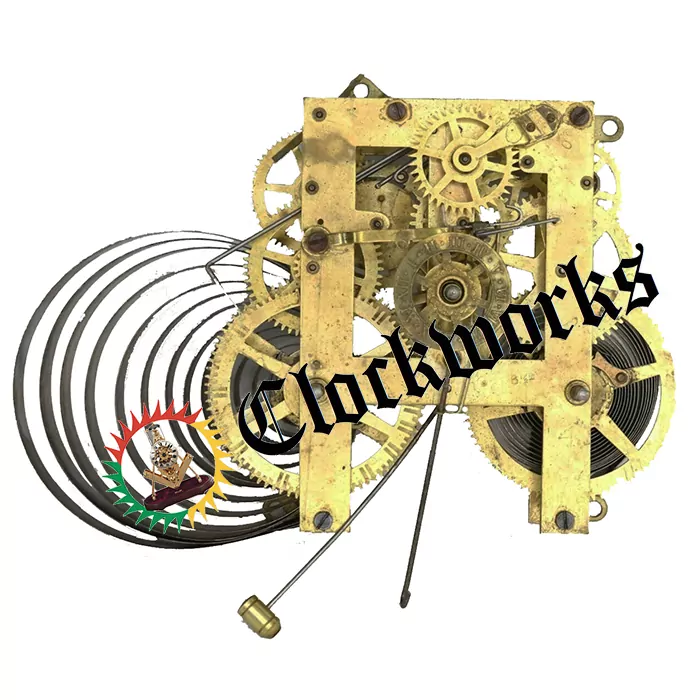
Clicks on weight driven movements
In general, this is a harder style to replace and not really available on the market. If you need these for a weight driven ratchet wheel it is best to replace the entire wheel. Replacing the entire wheel will include the ratchet wheel, the arbor it is on and also the gear.
It will have the click and spring on it all as one unit. This maybe the ratchet wheel on a chain driven clock or a cable drum for a cable driven clock. In both situations it is best to replace the entire component with the click and spring together. That way is it complete and done the best and quickest way.
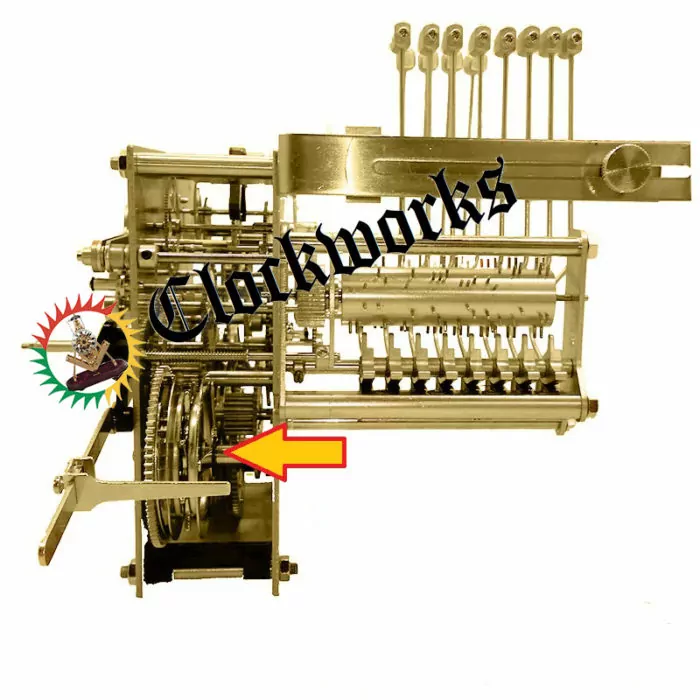
Clock Repair Verge Assortment
A verge is what engages with the escape wheel in clock repair. They come in an assortment pack of 9. So all you need to do is bend and cut them to fit your application. These are for escape wheels that are outside of the clock plates only.
These are not the quality of the old days and must be filed, bent, adjusted and customized to fit your needs. But the outcome should be the same. Unfortunately this is the only option available in this modern age and it does usually work out in the end to solve the problem. Of course if you have any questions please do not hesitate to ask.

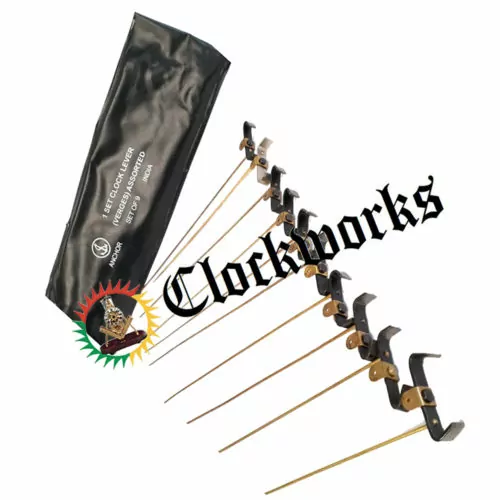

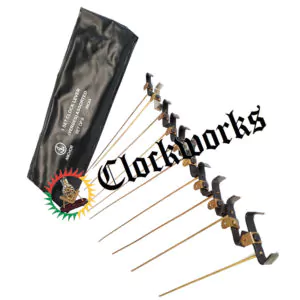
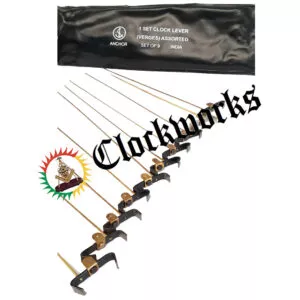

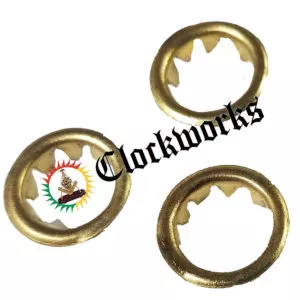
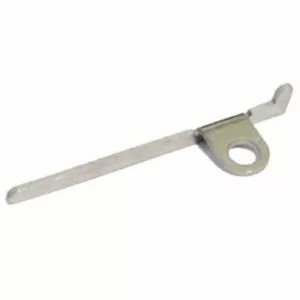
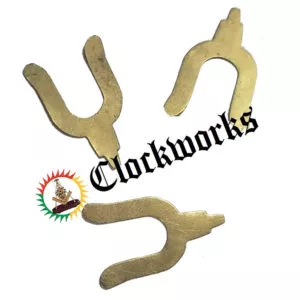











I have a mechanical wall clock that keeps gaining time. I have lengthened the pendulum but it still gains time. I have noticed when I take the works out of the clock and let it them run that they go tick tock for several beats and then seem to go ticktock ticktock for a few beats. I’ve considered buying new works but thought I’d ask in case there’s a simple solution.
Try moving the anchor closer to the escape wheel. Seems escape wheel is worn, moving the anchor more to it may or may not help. The escape wheel teeth can be worn from skipping. Best to try and see if helps, if not your in the market for a new movement or at least an escape wheel with a movement restoration.
James Stoudenmire
30yr Clockmaker
Author of Clockworks.com
So glad i found you guys thanks.
Iam glad it worked out. Great Job !
James Stoudenmire
30yr Clockmaker
Author of Clockworks.com
From a customer, I have a very old French movement. It says Vincenti & Cie. The verge is brass and has these tiny steel pegs that stick out and catch the wheel. I broke off one of these pegs. Can they be pressed out and replaced? Can the verge/crutch be replaced?
This is not something that can be purchases unless purchasing a used movement that is the same.
Must be made or something customized to work
James
My clock is loosing time..ex. Twelve hour period three minutes. Twenty-four hour period five- ten minutes. The pendulum bob is not catching the pendulum to to make it shorter. Any ideas. This is a Sligh clock.
Less pendulum length is required. Did the clock ever keep time with that very same pendulum? It may just be the wrong pendulum.
Many Thanks !
James and Donna Stoudenmire http://www.clockworks.com 124 Goss Hill = UPS Mailing PO Box 339 = USPS Mailing Huntington, MA 01050 USA clockworks@clockworks.com
Virus-free.
http://www.avg.com
Virus-free.
http://www.avg.com
Are the pallet portions hardened or not?
yes
will one of these work on a 1860’s Seth Thomas clock weight driven clock
Not without modification I am sure